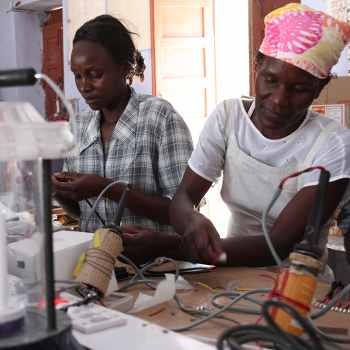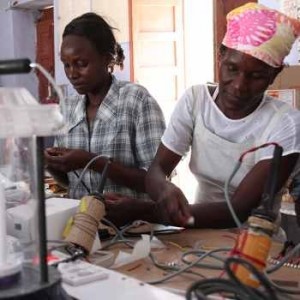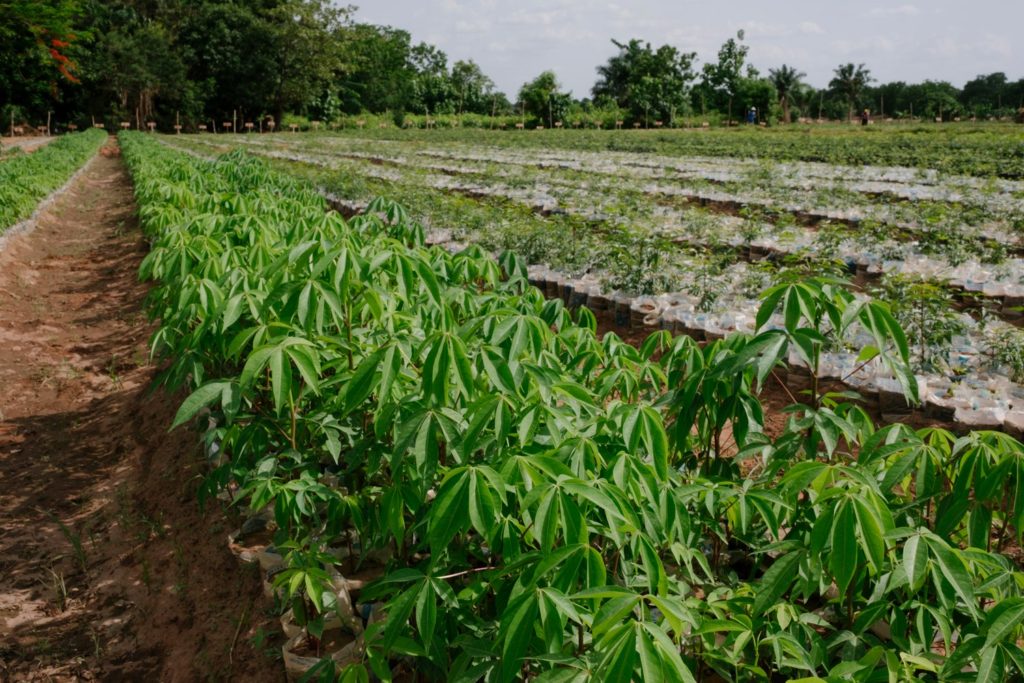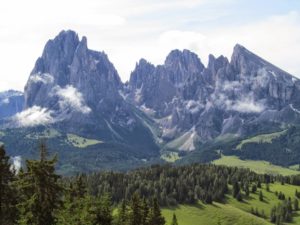Kenyan Women Light Up Villages with Solar Power


Let there be light. And thanks to the efforts of rural women in one of the most remote corners of the Kenyan republic, lights turn on as night falls at the end of a sunny day.
Tucked away in the remote villages of Olando and Got Kaliech in rural Kenya, residents in this poor outpost in south-western Kenya today have light after darkness falls. The light is thanks to Phoebe Jondiko, Joyce Matunga and Phoebe Akinyi, the three solar “women engineers” who have literally switched on the lights in the two villages with a view to lighting up more villages in the remote Gwassi Division in Suba District.
Blessed with year-round sunshine, Kenya is quickly waking up to the realization that it can successfully tap into one of the vast natural resources on the planet – the sun. Solar energy has for a long time remained largely untapped in Kenya due to a combination of factors with the single biggest obstacle being the hugely expensive solar kits.
But with the Kenyan government desperately looking for new avenues through which it can turn Kenya’s energy greener, this year it lowered the importation taxes levied on solar energy kits so as to encourage corporations and individuals to use solar to power domestic and industrial operations.
Solar Energy Empowers Rural Women
Victor Ndiege is the project manager of Green Forest Social Investment Trust (GFSIT), a Kisumu-based non-governmental organization (NGO) that is geared towards empowering women in rural areas through the provision of renewable power, easing domestic chores, especially when night falls and helping village women come up with income generating activities.
According to research conducted by GFSIT, village women spend between Kenya Shillings (Kes) 850 and 1,200 [approximately US $10 to $15] every month on lighting alone. The women, notes Ndiege, use various sources such as paraffin and firewood to light up their homes after dark and to cook food.
“This has negative effects on the environment as they have to cut down trees for firewood, while paraffin poses health risks to the women and their families on inhalation of the harmful fumes from paraffin lamps,” said Ndiege. “In that case, we identified solar energy as the most affordable alternative energy source that we could use in the villages. We partnered with the Barefoot College in India, which trains semi-illiterate rural women to fabricate, install and maintain solar lighting systems in the villages.”
Ndiege said that the women acquired vital solar engineering skills that they are currently applying in the remote villages of Olando and Got Kaliech. Under the Village Solar Committees (VSCs) program, village folks will contribute between Kes 500 and 800 [approximately US $7 to 10] in monthly subscriptions from each household to keep the program running.
“The village women have also started income generating activities that include a posho mill that is powered by solar energy to generate some income for the women groups and a small workshop where local youth can gain skills and eke out a living while supporting the village solar program as well,” explained Ndiege.
According to Ndiege, the GFSIT is importing a new batch of solar kits from India to be installed in other villages within Gwassi Division. This is largely to take advantage of the reduced importation taxes levied on solar kits by the Kenyan government as well as a means through which more rural villages can now switch on to solar energy.
Lighting Africa
Phoebe Jondiko, one of the women involved with the program, said that the solar project is a welcome relief for the rural folks in her village because its remote location and hilly terrain make it difficult to access energy from the national grid system under the Kenyan government-led initiative dubbed rural electrification program (REP).
Currently, only 20 percent of Kenyan households are connected to the national grid. Patrick Nyoike, the Permanent Secretary in the Ministry of Energy, said it is virtually impossible to connect every Kenyan household to the national grid system by 2030 due to the huge capital investments needed. This is in spite the fact that the Rural Electrification Authority (REA), the government agency mandated to connect rural areas to the national grid, has so far pumped more than $552 million over the last four decades into the program.
Said Nyoike: “National power grid connections require huge capital investments with the scattered nature of rural settlements that require off grid stations making this unattainable in the near future.”
According to Zachary Ayieko, the CEO of REA, solar energy offers a huge power potential for the nation since solar energy in Kenya could potentially generate up to three times the current daily national grid requirements. Because of this the REA has entered into a partnership with the International Finance Corporation to spearhead a new initiative called “Lighting Africa.”
Ayieko said that this ambitious project is currently running on a pilot basis in Kenya and Ghana, with a view to lighting up more than 2.5 million households in the next two years and an estimated 250 million households across Africa.
Though the initial costs of a solar kit are higher as compared to kerosene lamps, the overall cost of the solar kits is lower because there are no operational costs attached to them.
“Prices range between $10 and $93 for the solar kits depending on their capacity as compared to the monthly average of $10 spent by each household on kerosene,” said Arthur Itote, the project manager at the Lighting Africa Private Enterprise Partnership for Africa (LAPEPA).
In order to make the solar kits readily available and affordable to the rural poor, LAPEPA is working on starting a microfinance business model that will allow poor village folks make small payments over time until they have fully paid off the kits.
Joyce Matunga says that the solar energy kits can also be used to power irrigation pumps. This, she said, would be a big step forward as the farm produce would then generate income for poor households and the ripple effects across the villages will be poverty alleviation as a long-term benefit.
The Barefoot College is located in Tilona, India and is the brainchild of Indian-based social-entrepreneur Bunker Roy. This is the first time the college is partnering with a Kenyan-based community organization. The college has so far trained more than 100 semi-illiterate rural women and electrified more than 5,500 households in about 72 remote villages in 15 third-world countries.
And while Kenya is racing to adopt green energy technologies to power its booming economy into a middle-income economy in less than 20 years’ time, solar energy will play a pivotal role in Kenya’s green energy policy. This has been exemplified not only in the solar energy lighting program in rural Kenya, but in the new data center coming up in Nairobi.
With Kenya being the regional ICT hub, the Kenya Data Networks (KDN), a Nairobi-based internet service provider, has plans to build the first ever solar powered data center in Nairobi. The data center will be the only one of its kind in Africa. Building cost estimates are around Kes 600 million [US$ 7.5 million].
According to CEO Kai Wulff, KDN is also planning to use solar energy to power most of its digital villages spread in remote parts of the country under the Green Solar Power initiative. Wulff said that the initiative will be a two-pronged project that will take technology closer to the village folks through the provision of fast and cheap internet connections, while at the same time, providing cheap power to power the rural ICT centers.
Denis Gathanju is a freelance journalist based in Africa.
Kenyan Women Light Up Villages with Solar Power | Renewable Energy World by Denis Gathanju, Contributor









